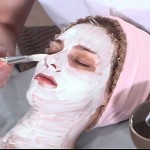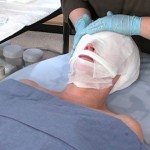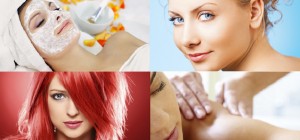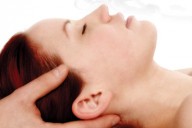Exfoliation: Right or Wrong
0The entire professional skin care industry has grown dramatically around anti-aging skin care products and treatments. I also think people would agree that skin has continued to age, despite well-intentioned efforts. Are we using the right ingredients? Are the ingredients getting to the right places in order to actually have an anti-aging effect?
The aging process
First, take a look at the aging process of the skin. Even though the dermis thins as people get older, the epidermis doesn’t, regardless of age or sun exposure. The body is designed to continuously replace  epidermal layers because a thinned epidermis could let in infection or result in fluid loss, both of which are life-threatening. The only aspect of the epidermis that is significantly affected by age is its rate of turnover.
epidermal layers because a thinned epidermis could let in infection or result in fluid loss, both of which are life-threatening. The only aspect of the epidermis that is significantly affected by age is its rate of turnover.
The reason for the slowdown is the same reason that the dermis thins—the skin is starving for nutrients and the demand for enzymes, lipids, proteins and antioxidants needed to maintain the skin is higher than the blood supply can provide daily. Remember that the dermis is the sole provider of nutrients for itself and the epidermis and, as people age, the blood supply continues to decrease. With less blood, the amount of these essential nutrients also declines. The barrage of free radicals from diet, stress, sun and environmental toxin exposure overwhelm the skin, depleting the antioxidants and devouring the shrinking supply of nutrients needed to keep the dermis at full thickness and the epidermis at a 30-day cycle. The skin is forced to make a choice between allowing the dermis to thin or allowing the epidermis to thin. The best evidence of this is the aging pattern of dark skin types. You will rarely find a wrinkle on 70-year old African-American nonsmokers because their melanin keeps inflammation at a tolerable level that allows the dermis to maintain itself.
Exfoliation
Restoring the epidermal barrier is the No. 1 priority of the skin because humans cannot survive with a thinned epidermis. Forced exfoliation with alpha hydroxy acids (AHAs) and other ingredients result in an
emergency message from the epidermis to the dermis requesting immediate assistance. The only way to get replacement cells to the surface quickly is to increase turnover temporarily. This does not mean the epidermis or dermis are healthier; it just means that emergency measures were put in place to fix the epidermal deficit. Epidermal exfoliation also increases sun sensitivity, allows for a higher absorption of environmental toxins and dehydrates the skin.
The dermis has a different set of priorities. It also tries to maintain its thickness, but fails under the weight of the huge demands for nutrients and the inability of the dermal blood supply to keep pace. When fewer demands of inflammation are placed on the skin, the dermis handles the load much better, and its thinning is substantially reduced. When inflammatory demands are abnormally high, as in the case of rosacea, the dermis thins even more rapidly, resulting in the increasing number of visible capillaries for rosacea sufferers throughout time. When the dermis thins, the worst case scenario includes sagging skin, broken capillaries and wrinkles. These events are not life-threatening, so the process is allowed to continue. It is reasonable to believe that the starving dermis becomes even more starved every time the epidermis has a new repair demand that takes its needed resources—which begs the question: Is exfoliation helpful?
Exfoliation has been a primary solution for anti-aging for many years. There is no question that compromising the integrity of the epidermal barrier increases the rate of turnover. After all, the skin is rushing to replace its thickness, and it can only do so by starting at the base and working its way up. Does that mean exfoliation is anti-aging?
Unfortunately it is not. Restoring the thickness and integrity of the barrier and improving the turnover rate have no impact on the dermis, where aging actually occurs. Additionally, the daily demand for new layers of the epidermis puts even more of a strain on the limited nutrient supply, which means something has to give.
Forcing the repair of those epidermal layers at twice the rate the skin has intentionally chosen will utilize scarce nutrients twice as quickly. The loser in all of this is the dermis, because it can—and will—thin faster the more it is starved. Also, remember that exfoliating the epidermis increases photodamage, which will further increase aging.
Peels and penetration
Dermal thinning is a difficult problem because of several factors: 1. The average skin care product has a very small dermal penetration rate, which means most of the anti-aging ingredients never impact the appropriate target; and 2. Aggressive treatments, such as trichloroacetic acid (TCA) peels and many lasers that get to the dermis are typically traumatic enough to age the skin before any positive result. For example, according to my personal research, one study showed TCA thinned the dermis by 30% in one application—that is 30 years of aging in five minutes. The body usually recovers most of that loss as it heals, but how often does full recovery occur, and should these peels really be called anti-aging, based on this evidence?
If you have ever used a chemical peel on a client who developed telangectasias post-peel, that is a definite sign that their dermis is thinner than when they started. The 2% penetration issue is quite problematic because few ingredients that actually create new layers of collagen rarely get used when they are stuck in  the epidermis. Remember that acids typically create new collagen because the new collagen is allocated primarily to the burned areas. There is little evidence to suggest that new collagen formation reverses aging in any way due to glycolic and TCA peels. That means skin care professionals may be aging the skin of clients temporarily, resulting in no net gain.
the epidermis. Remember that acids typically create new collagen because the new collagen is allocated primarily to the burned areas. There is little evidence to suggest that new collagen formation reverses aging in any way due to glycolic and TCA peels. That means skin care professionals may be aging the skin of clients temporarily, resulting in no net gain.
A new idea
So why do people keep coming back for more? It is a valid question. Does the skin look better with some of these exfoliants? Often times, yes, but that needs further explanation. AHAs, retinols and vitamin C are classic examples of ingredients that exfoliate and plump. Exfoliation is often discussed, but plumping isn’t. Plumping occurs when 98% of these ingredients sit in the epidermis and cause irritation, resulting in edema, or swelling. Edema makes lines look better. The problem is, the lines are not actually better, and the inflammation starves the skin even more. If you don’t use acids or retinols for one to two weeks, you probably will see the skin deflate to its actual state. You will notice more lines, more laxity and a dullness that is reflective of a skin that has been in survival mode for too long. As soon as you start back on these products, everything looks better almost immediately, which should be your first clue that the plumping isn’t new collagen formation. Because these products are epidermal and aging is dermal, it only makes sense that they have not been preventing the skin from aging.
I know that many are upset at the suggestion that what has been done for so many years is potentially damaging. However, as with any aspect of medicine, things change and it is important for skin care professionals to be open to new ideas.
Lasting effects
The aging process occurs primarily in the dermis. Almost everyone acknowledges that the vast majority of anti-aging treatments have little to no impact on the dermis, so to get visible results, new ways have been created to plump the epidermis. The problem with this strategy is that the plumping usually makes the skin work harder and starve more. Advances in dermal delivery ingredients, such as phosphatidylcholine, make reaching the dermis possible and have the added benefit of restoring the barrier instead of stripping it. In addition, there are a handful of research-proven fibroblast stimulators that do not work through trauma: niacinamide; GHK copper peptides; 1,3 beta glucan; avocatin; chlorella;, retinaldehyde; retinoic acid; R-lipoic acid; and L-ascorbic acid. My goal is to change the focus of skin care from the temporary effects of epidermal plumping to the more lasting effects of dermal remodeling.
This article was originally publishied in the August 2008 issue of Skin Inc. Magazine and is being reprinted with permission. All rights reserved.
To learn more about chemical peels and other skin care options, please visit Aesthetic VideoSource. They have educational videos on everything from Vitamin C facials to Medical Grade Chemical Peels. You can watch free video excerpts on their website.




